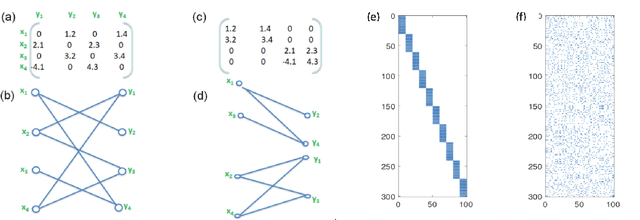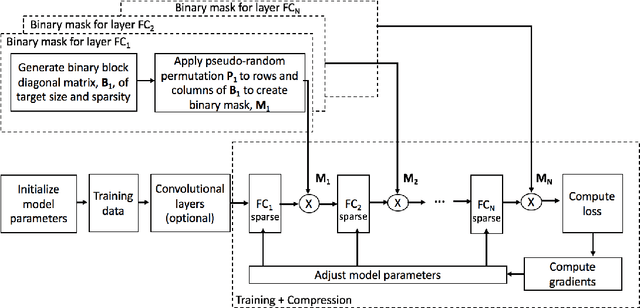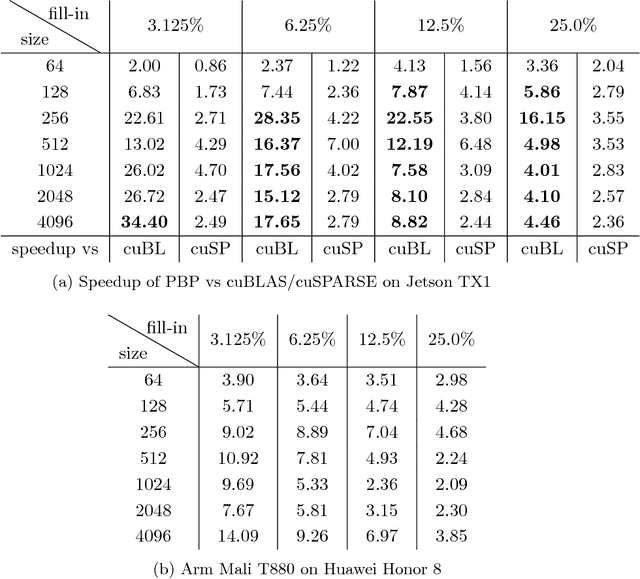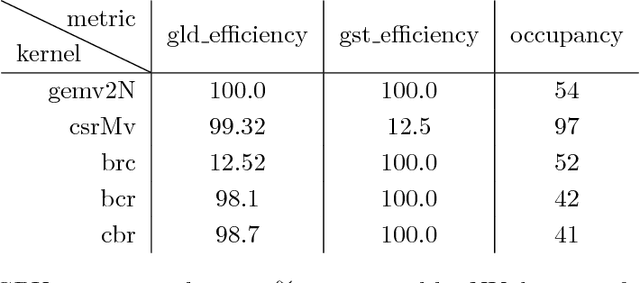Rawan Naous
Tuning Algorithms and Generators for Efficient Edge Inference
Jul 31, 2019



Abstract:A surge in artificial intelligence and autonomous technologies have increased the demand toward enhanced edge-processing capabilities. Computational complexity and size of state-of-the-art Deep Neural Networks (DNNs) are rising exponentially with diverse network models and larger datasets. This growth limits the performance scaling and energy-efficiency of both distributed and embedded inference platforms. Embedded designs at the edge are constrained by energy and speed limitations of available processor substrates and processor to memory communication required to fetch the model coefficients. While many hardware accelerator and network deployment frameworks have been in development, a framework is needed to allow the variety of existing architectures, and those in development, to be expressed in critical parts of the flow that perform various optimization steps. Moreover, premature architecture-blind network selection and optimization diminish the effectiveness of schedule optimizations and hardware-specific mappings. In this paper, we address these issues by creating a cross-layer software-hardware design framework that encompasses network training and model compression that is aware of and tuned to the underlying hardware architecture. This approach leverages the available degrees of DNN structure and sparsity to create a converged network that can be partitioned and efficiently scheduled on the target hardware platform, minimizing data movement, and improving the overall throughput and energy. To further streamline the design, we leverage the high-level, flexible SoC generator platform based on RISC-V ROCC framework. This integration allows seamless extensions of the RISC-V instruction set and Chisel-based rapid generator design. Utilizing this approach, we implemented a silicon prototype in a 16 nm TSMC process node achieving record processing efficiency of up to 18 TOPS/W.
MPDCompress - Matrix Permutation Decomposition Algorithm for Deep Neural Network Compression
May 30, 2018



Abstract:Deep neural networks (DNNs) have become the state-of-the-art technique for machine learning tasks in various applications. However, due to their size and the computational complexity, large DNNs are not readily deployable on edge devices in real-time. To manage complexity and accelerate computation, network compression techniques based on pruning and quantization have been proposed and shown to be effective in reducing network size. However, such network compression can result in irregular matrix structures that are mismatched with modern hardware-accelerated platforms, such as graphics processing units (GPUs) designed to perform the DNN matrix multiplications in a structured (block-based) way. We propose MPDCompress, a DNN compression algorithm based on matrix permutation decomposition via random mask generation. In-training application of the masks molds the synaptic weight connection matrix to a sub-graph separation format. Aided by the random permutations, a hardware-desirable block matrix is generated, allowing for a more efficient implementation and compression of the network. To show versatility, we empirically verify MPDCompress on several network models, compression rates, and image datasets. On the LeNet 300-100 model (MNIST dataset), Deep MNIST, and CIFAR10, we achieve 10 X network compression with less than 1% accuracy loss compared to non-compressed accuracy performance. On AlexNet for the full ImageNet ILSVRC-2012 dataset, we achieve 8 X network compression with less than 1% accuracy loss, with top-5 and top-1 accuracies of 79.6% and 56.4%, respectively. Finally, we observe that the algorithm can offer inference speedups across various hardware platforms, with 4 X faster operation achieved on several mobile GPUs.
Structured Deep Neural Network Pruning via Matrix Pivoting
Dec 01, 2017



Abstract:Deep Neural Networks (DNNs) are the key to the state-of-the-art machine vision, sensor fusion and audio/video signal processing. Unfortunately, their computation complexity and tight resource constraints on the Edge make them hard to leverage on mobile, embedded and IoT devices. Due to great diversity of Edge devices, DNN designers have to take into account the hardware platform and application requirements during network training. In this work we introduce pruning via matrix pivoting as a way to improve network pruning by compromising between the design flexibility of architecture-oblivious and performance efficiency of architecture-aware pruning, the two dominant techniques for obtaining resource-efficient DNNs. We also describe local and global network optimization techniques for efficient implementation of the resulting pruned networks. In combination, the proposed pruning and implementation result in close to linear speed up with the reduction of network coefficients during pruning.
 Add to Chrome
Add to Chrome Add to Firefox
Add to Firefox Add to Edge
Add to Edge